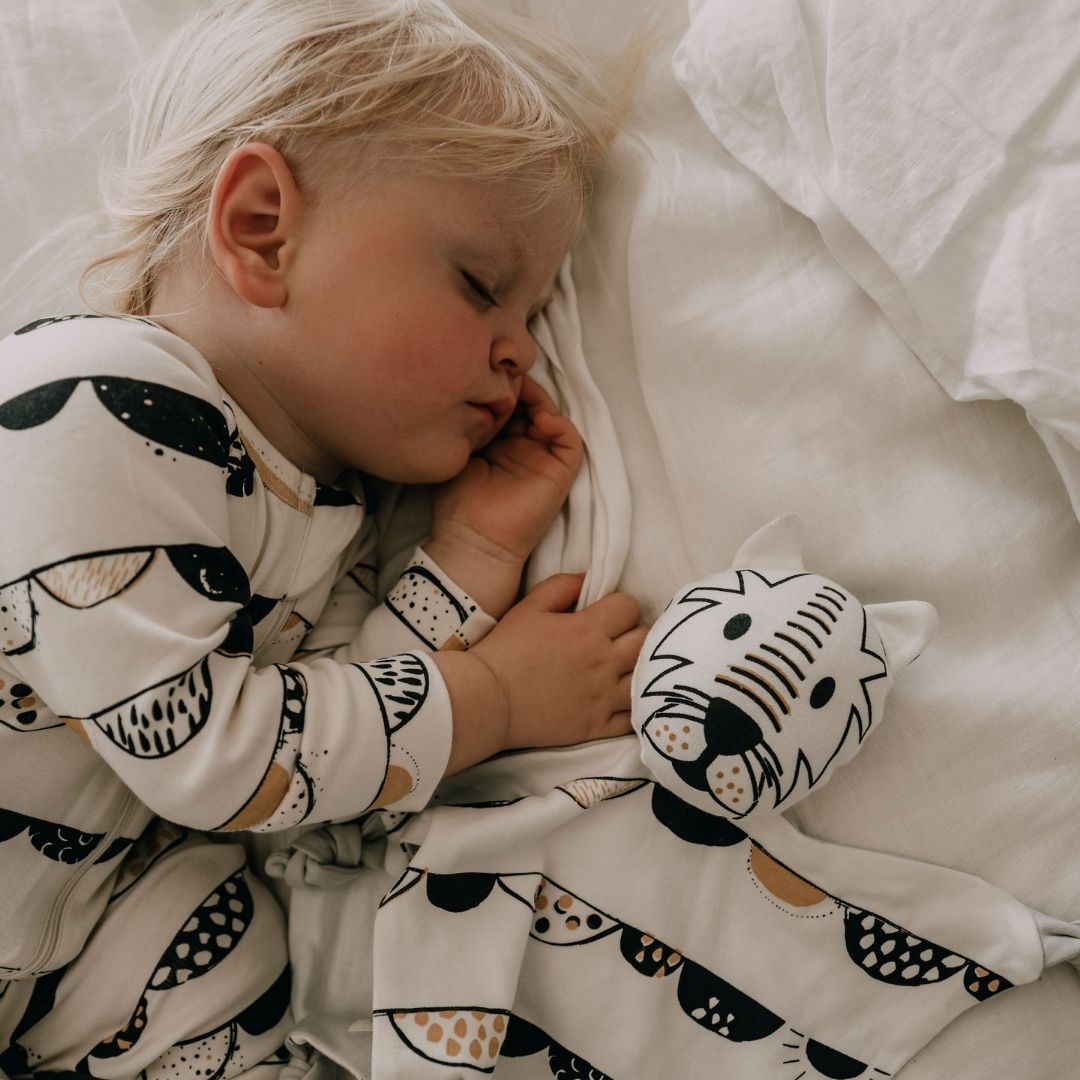How to Introduce a Comforter: A Simple step for calm nights

We've partnered with the sleep gurus at Slumber & Sprout to bring you some simple, useful tips to help you get more sleep.
First up! What is a #babycomforter and how does it work? Read on to find out why a simple baby comforter could make all the difference to your sleep routine.
Do you remember having a special teddy bear or perhaps a blanket when you were little? It was your security, you held it close to you, its smell made you feel safe and by your side it went everywhere with you – this was your comforter. A comforter is a transitional object and a positive tool for children for various reasons including helping them to relax and feel secure when drifting off to sleep. We recommend introducing a comforter to your little one so that they can experience the love of a comforter - just like you may have when you were little.
When it comes to your little one’s sleep, comforters can help to build a positive sleep association, making falling asleep and resettling during the night easier for your child. The great thing about a comforter is the availability of it to soothe your little one day and night, helping them to feel secure, brave, regulate their emotions and work things out for themselves and in turn self-soothe. The power of a comforter just can’t be overlooked.
Once your little one is approx. 7 months of age a comforter is considered safe for unsupervised sleep. Prior to this age a comforter should only be used to work towards creating a bond with the object and while you are supervising your baby. You can do this by keeping your comforter close in your routine before you put baby in the cot – for example, cuddling between you while you’re feeding.
Our tips for introducing a comforter:
- Ensure the comforter is safe for your baby. Kippins comforters are made from organic cotton, they are lightweight, breathable and have no nasties, no fuzzies and no choking objects. They’re made to be simple and safe.
- Your little one must be unswaddled for sleeping with arms and hands out as well as uncovered.
- Make it smell like Mama - the scent of Mama is a powerful tool.
- Have a backup. Losing a special comforting object can be awful for a child so it’s important that you have more than one and that all comforters are used regularly so that your child doesn’t favour one over the other.
- Introduce the comforter as part of your pre nap and bedtime routine i.e. sleeping bag on, read a book, turn on the white noise, pass the comforter and into bed. Having the comforter form part of your little one’s bedtime ritual is what will help to build that relationship and sleep trigger between the comforter and sleep.
The most important thing about introducing a comforter is your little one’s safety and that there no risk to your baby’s head/face being covered by anything soft or loose in their sleep environment. Red Nose recommends keeping soft toys out of the sleeping environment for babies under seven months of age but for babies over seven months of age a transitional object such as a comforter can be introduced for sleeping.

